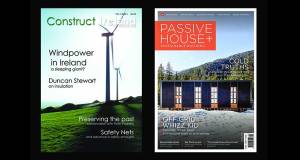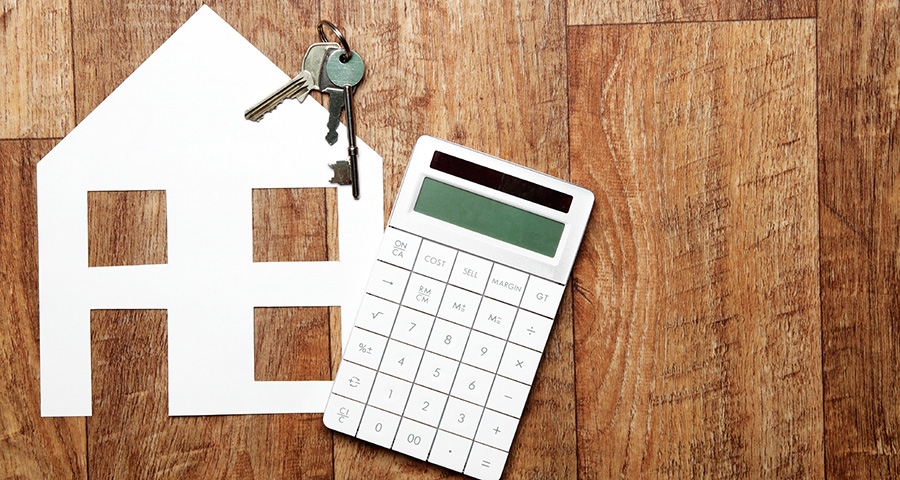
- Insight
- Posted
The cost of building passive
Perhaps the most common argument against making passive house mainstream is that it costs too much to build. But as building regulations tighten and an increasingly competitive passive house sector emerges, does that argument hold water?
Passive house is often perceived as “very nice – but rather expensive.” But is passive house really unaffordable? While some have put the extra cost as high as 15 to 25%, other estimates tend to be lower, with estimates of the ‘cost uplift’ for building to passive house estimated anywhere from around 12-15%, down to 0% – or even below.1
The differential does appear to be slowly diminishing, with a handful of pioneers (for example Beattie Passive with their kit houses, or two of the projects featured in this issue 2) reporting that they have achieved passive house on the same budget as the standard alternative.
Clearly there can’t be one figure for ‘how much more does passive house cost?’ – it depends what you are comparing it with, for one thing. In Ireland, is it the 2005 version of Part L or the 2008 or 2011 revisions, complete with their respective 40% and 60% energy reduction targets? In the UK, is it 2010 Part L? Level four in the Code for Sustainable Homes? The 2016 zero carbon standard?
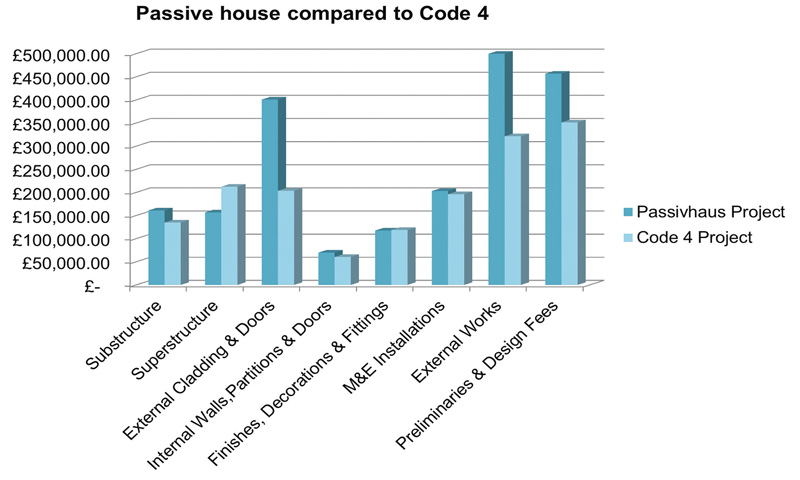
The UK Passivhaus Trust do not give a definitive figure for the cost of passive house, as “there is as yet no consistent metric” – though they are commissioning some research.
Costs for delivering a passive house-level retrofit are even harder to derive, as so much depends on the existing building, and there are no obvious standards for comparison.
Nonetheless, for any projects currently considering passive house, design teams will be asking themselves what the costs would be.
Starting with the capital costs (which of course, are not the only ones to consider), advice from those who have built to the passive house standard is:
- Some extra components and materials are required (such as MVHR – though this is becoming more common generally – and more insulation);
- Some components are more expensive (doors and windows, for example).
To set against the extra expense, there are factors that bring the build cost for passive house back down again including, notably, much smaller heating systems. And passive house form is naturally economical, as passive house consultant Nick Grant points out: “Excess envelope area that does not deliver useful floor area means wasted energy ... but also, wasted cost.” 7
Are relative – or even absolute - prices going to come down?
While passive house is relatively unusual, components will be dearer. As demand rises, choices are widening, and prices should fall: the iPHA reports that in Germany “triple-glazing now has more than 50% market penetration, and has dropped in price significantly. The same holds true for ventilation systems.” In Ireland, where both the rapid uptake of passive house and a significant increase in the national building regulations have increased demand, mainstream window manufacturer Munster Joinery has begun to produce passive house certified windows at relatively low cost, for example.
Design costs for passive house are often higher as well – but this too may be a reflection of the fact that for many it is a new approach, rather than an inherently more fiddly one. Chris Parsons of Parsons Whittley – who picked up a UK Passivhaus Award in 2012 for their Wimbish social housing scheme – says: “We produced 78 detailed drawings for Wimbish whereas a similar Code 4 scheme had only 17. Of course we were being careful, but communicating the passive house sensitivities properly is part of the battle.”
This effect may therefore be temporary: “I am confident that costs are coming down, as designers find more confidence, the product market gets more sophisticated, and as the contractors get less afraid of the risk,” Parsons says. “However, in the UK, we are still in the very early stages of the latter.”
Estimated extra costs for passive house
- 15-9% above UK Part L 2010, bere:architects: small detached passive house prototypes for a housing association;
- 12 and 6% above Code 4 (on the UK’s Code for Sustainable Homes) for Wimbish and Ditchingham schemes respectively: Hastoe Housing Association;
- 12% above Code 4 for proposed apartments: Broadland Housing Association 3;
- 3-8% extra above German low-energy standard in 2006: International Passive House Association (iPHA). They suggest this may now be lower 4;
- 0-7% extra: Neil Cutland, 2010 review of prices over Europe. ...or no extra cost
- 0% vs existing schools budget: Architype, Wolverhampton primary schools;
- 0% vs traditional construction to UK Part L 2010: Beattie Passive’s standardised timber kit houses 5;
- Negative: Jay Stuart, passive house in Ireland using single skin blockwork and external insulation, vs traditional masonry double skin
- - 4.5% (predicted) vs BREEAM Very Good: Architype archive building requiring specialist levels of environmental control. Passive house cheaper through significant reduction in plant. 6
Convergence from upgrading the mainstream
As building regulations are tightened nationally and internationally, 8 whatever ‘premium’ there is for passive house naturally narrows. In Ireland, where the performance standards for new buildings have already been dramatically increased, sustainable design consultant Jay Stuart (a leading figure in the lobby for reform, along with this magazine) suggests this means the difference in cost between a standard minimum compliant building and a passive house building is now “negligible”.
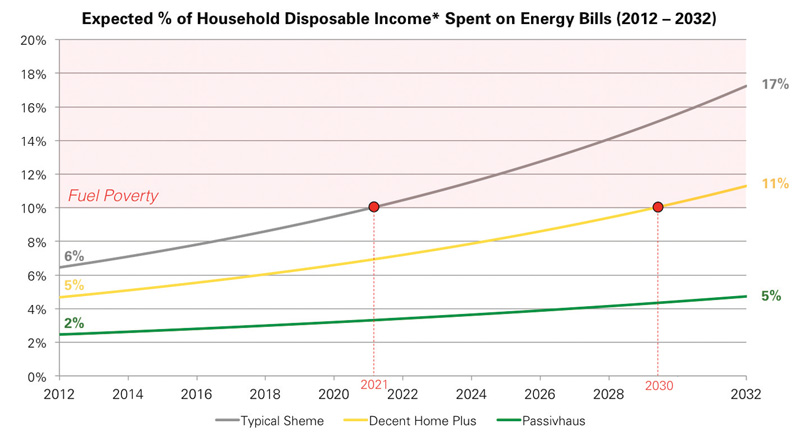
In the UK, progress is slower, with announcements awaited at time of going to press on both the 2013 Part L changes and the final shape of the 2016 “zero carbon” standard for dwellings.
The UK’s Zero Carbon Hub has said that passive house should be counted as satisfying both the 2016 fabric standards and the first layer of ‘on-site’ carbon reduction in one go – avoiding the need for on-site renewables. 9 This could save money, and boost adoption, which in turn may ease prices for passive house downward again, even as general construction prices are being pushed up by the new standards.
While no-one can offer a costed analysis, it’s plausible that prices could reach parity at some point – or even that passive house could turn out to be cheaper, at least for some schemes.
Lifetime costs
Even if construction costs for passive house currently remain higher, at least in some situations, how much does this matter? How does passive house stack up as a ‘lifetime buy’ for the investors putting up the capital?
Looking at costs this way, there is plenty of evidence that even at 2013 construction and energy prices (and 2013 interest rates) passive house is a very sound investment.
The most obvious lifetime saving is on energy costs, of course. Jay Stuart says he helped convince the Irish housing industry to adopt a very low energy design specification “with just a simple spreadsheet showing that over a 25-year mortgage, upgrading to this standard represented an excellent return on investment – the return on any extra investment is always in excess of 10%.” Bere Architects have also calculated that with current interest rates and fuel prices, a passive house presents a more economically viable investment for a prospective home owner. 10
Although there is a lot of anxiety about the high costs of deep retrofit, the same financial rationale may apply. A study cited by the International Passive House Association found the additional costs for a passive house level renovation were about 8%, while the cost per kWh saved were below €0.06, compared to €0.07+ per kWh for energy. 11
Not everyone expects to occupy a building they commission for the full lifetime of the finance. Public authorities do – hence the attractiveness of passive house to Irish Rail for its train driver’s accommodation building, UCD’s Roebuck Castle halls of residence, the Irish Department of Education’s passive schools in Meath and Wicklow, Wolverhampton City Council’s primary schools, and Powys County Council’s Canolfan Hyddgen at Machynlleth. 12
For private purchasers, 20-30 years of a loan term may be too long a horizon. But there are other cash benefits to passive house that tell even in a shorter spell of ownership.
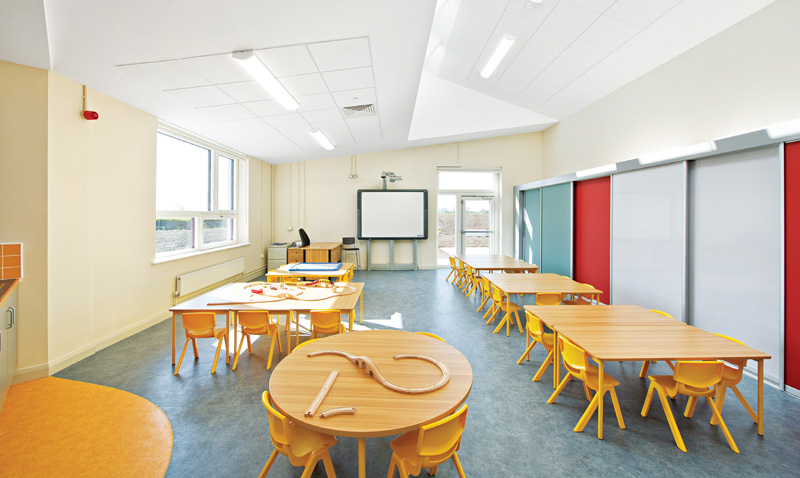
Not only are warmth, comfort and low energy bills immediately rewarding, but building quality is a worthwhile investment for its own sake, as Chris Parsons points out: “With passive house you are getting a much better quality building. Though of course, accountants famously don’t price value, only cost!
“But I argue that there is a reduced maintenance cost, both from the better components, but also because you don’t have condensation and moisture issues, which cause tremendous fabric damage to normal dwellings.” In other words, for a householder, a nice home that stays nice, lower maintenance costs – and if prospective purchasers in future pay more attention to running costs than they do today, better resale value too?
For a social landlord, who, though not paying energy bills, has a long term interest in the fabric, lower maintenance costs alone can repay the passive house cost premium. Norwich-based Broadland Housing Association has plans to build a large passive house apartment scheme, and have reportedly calculated that although their apartments will be more expensive to build “this can be recouped over 30 years by savings in management costs.” 13 Orbit Heart of England Housing Association adds that “Satisfied customers result in reduced management and maintenance costs.” 14
Whoever is paying for the energy, if it’s too expensive, the investor suffers. But in the end, it is simple energy costs that could swing the financial argument for more and more clients, in all sectors.
Thus even when housing associations and other landlords do not pay directly for their tenants’ energy use, they still benefit from keeping tenants out of fuel poverty. While the primary motivation may be social, there is also a sound financial case to be made: “Rising energy prices create a strong business case for investing in passive house,” Broadland Housing Association has said, “as lower fuel bills will mean tenants have more money to pay their rent.”
Andrew Savage, executive director for business growth at Broadland Housing Group, believes that more reliable income streams make passive house an attractive financial option for “savvy investors”. Has this logic got through to the corporate lenders? Kevin Hartnett, business development director of Hastoe Housing Association, agrees there is a good business case for passive house, but hasn’t seen evidence of big lenders taking this on board “as yet”.
However, rent arrears and debt to energy companies are already rising. 15 16 Given the precarious situation so many households are finding themselves in, the decision of some social landlords to protect their tenants from fuel poverty via passive house seems a wise one.
Might this same effect one day become important for investment in private homes – and influence mortgage lending? In the UK owner-occupier finance market, there are already some products offering discounts for borrowing for low energy homes, or for carrying out low energy retrofits. 17 These products have not formally included the “low energy bill/low default risk” into their calculation, though Paul Ellis of the Ecology Building Society (which offers a 1.25% discount on the lowest energy homes, including passive houses) 18 has found that “a low energy building tends to be a higher quality building with lower running costs, which makes it a lower risk for us.”
However, a recent report in the Washington Post real estate section offers hard evidence that “savvy” mortgage lenders ought to give running costs more thought when making lending decisions.
Earlier this year, the paper reported that in a sample of 71,000 home loans from across the USA, “researchers found that mortgages on homes with Energy Star certifications were, on average, 32 percent less likely to default than were loans on homes with no energy-efficiency improvements.”
Researchers took pains to statistically separate out other factors that might account for the striking difference, but concluded that the effect was genuinely related to the energy performance of the homes. 19
Fuel poverty here we come
Lenders might have to wake up their ideas about the buildings they are lending on, quite quickly. Average domestic energy bills have been increasing at around £100 a year for some time, and show little sign of slowing. 20 Yet if anything, incomes of the most disadvantaged, and probably middle-income households too, are falling. 21
As numerous experts warn, energy prices are rising over the longer term, and not just because we are investing in low-carbon energy. Fossil energy itself is also becoming more expensive, as demand rises, and sources become more expensive to extract. 22
How can we realise these opportunities?
So, it does look as if there is an increasingly convincing case that building and refurbishing to passive house levels provides a good return to investors, and an excellent deal for occupants and planet.
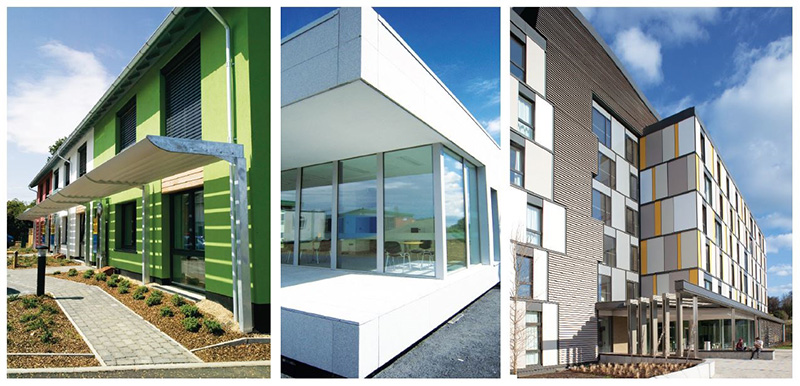
One of the best ways to ensure we maximise these benefits nationally might be to legislate for higher standards – both in design and performance – faster. After all, this would start to ease the political pressure on fuel prices and decarbonisation; it would improve health, especially among the disadvantaged and elderly, tackling the human cost of fuel poverty and saving many hundreds of millions of pounds and euro a year in health and welfare spending. 23
Direct government spending on low energy retrofit can even be profitable, returning more in Vat, income tax receipts and reduced out-of-work benefits than the initial investment; 24 and if passive house really is more expensive to build, this should translate into more labour and materials – meaning more economic activity.
In fact it’s hard to see who would lose, other than, if one wanted to be cynical, those whose business model depends on a degree of shoddiness.
If changes to building regulations are anything to go by, this argument has largely been won in Ireland, yet in the teeth of this logic, the UK government is dragging its feet, suggesting it is hard to increase building standards in case ‘too much red tape stifles development’ 25 or makes it ‘unviable’.
Mark Brinkley, author of The Housebuilders’ Bible, argues that any added costs for development simply mean land values would fall – which ought not to be a problem, since the “value” is simply the unearned increase in price generated by development rights. “Developers work out the eventual value for the development, subtract the development costs, and arrive at the price they can pay for the site. So saying adding costs makes development “unviable” is a slightly specious argument.”
Jay Stuart believes that there are cultural, even psychological issues at play: “I think the perceived cost of passive house is because of the fear factor. In my experience passive house is not difficult to do, the big thing is dealing with change – people don’t like change.” Bruce Tofield at the University of East Anglia has also identified entrenched adversarial practices -- including pushing risk down the chain to subcontractors – as a major obstacle to the teamwork required to deliver genuine energy efficiency.26
Perhaps in the end, it might be the market that offers the best hope of raising standards. Jay Stuart is an optimist: “I would say this is the way you can exceed the market – a house you can show to be extremely warm, comfortable and cheap to run.”
This has been the experience in Frankfurt, home of the passive house movement. The International Passive House Conference in April heard that landlord and developer ABG Frankfurt builds to passive house standards because it is commercially successful for them: “Passive house buildings are a profitable product” they report. Strong demand from buyers and tenants means swift sales and no voids, and thus a reliable income stream.27
Meanwhile in the UK, RIBA and Ipsos Mori found that among the occupants of new houses who were dissatisfied with their homes, high energy bills were by far the most frequently cited cause of that dissatisfaction.28 Customers are paying for low standards once a quarter, and may eventually demand better.
Could a combination of rising energy prices, consumer awareness and intelligent finance pull the UK industry forward, faster than they are being half-heartedly nudged from behind by a vacillating and conflicted government? We seem a long way from that point now, but if a virtuous circle of rising awareness, increased demand, and falling prices starts to operate, who knows?
This year’s International Passive House Conference also heard how ABG Frankfurt found the admin for billing tenants for heat in their latest passive house apartments cost more than simply supplying the heat for free. So they don’t bother to charge. What would Irish and British householders think if they heard about that? Perhaps they should be told.
1http://www.homebuilding.co.uk/advice/key-choices/green/Passive House-overhyped
2Deborah Byrne’s passive house in Cork (p36) and Architype’s Oakmeadow school in Wolverhampton (p46)
3Based on cost estimate at £1,500 per square metre compared with around £1,350 for a home that meets Code for Sustainable Homes level 4
4http://passipedia.passiv.de/passipedia_en/basics/affordability/
investing_in_energy_efficiency/are_passive_houses_cost-effective
5http://www.building.co.uk/buildings/green-for-growth-zero-carbon-homes/5049330.article
6www.ukpassivhausconference.org.uk
7http://www.aecb.net/forum/index.php?topic=2529.0
8Euractiv http://tinyurl.com/cynuo4h In Europe, the Energy Performance in Buildings Directive will require all new buildings in the EU to be “nearly-zero-emitting” by 2021
9Zero Carbon Strategies for Tomorrow’s Homes, Zero Carbon hub 2013
10Nick Newman, International Passivhaus Conference 2012
11http://passipedia.passiv.de/passipedia_en/basics/affordability/
investing_in_energy_efficiency/economic_feasibility_of_passive_
house_retrofits
12http://www.aecb.net/publications/publication-author/john-williamson/
13http://www.insidehousing.co.uk/ihstory.aspx?storycode=6520823
14Why Passivhaus, Passivhaus Trust, 2013
15http://www.stepchange.org/News/Severerentarrears.aspx#
16http://www.scotsman.com/edinburgh-evening-news/latest-news/
five-million-customers-in-debt-to-energy-suppliers-1-2884652
17http://www.businessgreen.com/bg/news/2242368/nationwide-
launches-new-green-home-loan
& http://lowcarbonkid.blogspot.co.uk/2013/03/there-are-far-better-deals-than-green.html
18http://www.ecology.co.uk/news/press-releases/78/ecology_
launches_new_discounts_for_energy_efficiency
19http://articles.washingtonpost.com/2013-03-28/news/38114519_1_
utility-bills-energy-star-homes-energy-efficient-homes
20http://www.dailymail.co.uk/news/article-2216195/Devastating-power-rises-hit-8million-homes-British-Gas-raise-prices-80-month.html
21http://www.resolutionfoundation.org/publications/final-report-commission-livingstandards/ via Bruce Tofield
22http://tullettprebonresearch.com/2012/11/23/hot-air/
23http://www.energybillrevolution.org/fuel-poverty/
24http://www.renovate-europe.eu
25Building regulations minister Don Foster said (Building, March 6 2013) that “he was struggling to strike a balance between improving standards and encouraging activity in the house building sector, which is lagging far behind what it needed.”
26Delivering a Low Energy Building: making quality commonplace, Bruce Tofield, UEA, 2012
2717th International Passive House Conference
28‘Housing Standards and Satisfaction, Ipsos Mori and RIBA, 2013



